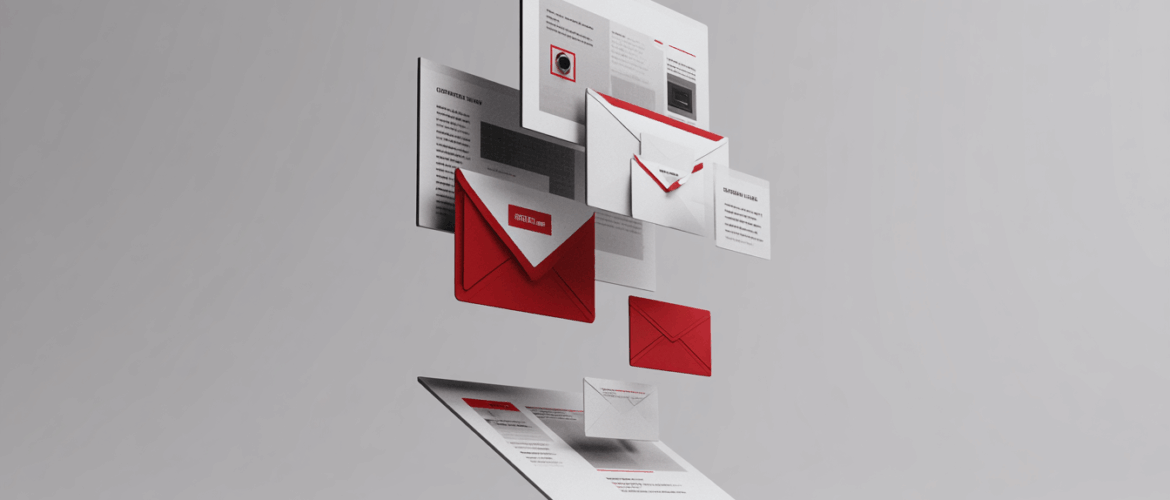The world of digital marketing continues to change and expand every day, but newer options like short-form videos and influencer marketing don’t replace the basics. Email marketing remains one of the most effective ways to reach and engage with your audience, so it should remain a key part of your marketing campaigns. However, with the rise of spam filters and crowded inboxes, it’s becoming increasingly difficult to get your emails noticed. How do you cut through the noise?
The key to success lies in avoiding common email marketing mistakes that can hurt your campaigns and damage your reputation, earning your company a spot in the spam folder, or worse, a “click to unsubscribe” from a former customer.
In this post, we’ll explore the top 10 email marketing mistakes to avoid, along with a few actionable tips that can make your next email marketing campaign a success.
1. Not Segmenting Your Email List
Segmenting your email list is crucial to delivering relevant content to your subscribers. By dividing your list into smaller groups based on demographics, behavior, or preferences, you can create targeted campaigns that resonate with each group. This will make people more likely to open their emails and follow your call-to-actions.
You should never send the same email to your entire list without considering their individual needs and interests, even if that’s the “easier” way to do things. Instead, use email marketing software to segment your list and create targeted campaigns that appeal to each individual customer.
2. Using Spammy Subject Lines
Your subject line is the first thing your subscribers see, and it’s often the deciding factor in whether they open your email or not. Using spammy subject lines can hurt your open rates and damage your reputation. Yes, “clickbait” can be compelling at first, but once you’ve done it a few times, people will see that you’re “crying wolf” and they’ll stop reading what you have to say.
Try to avoid using all caps, excessive punctuation, or misleading subject lines, no matter how compelling they make the email headline. Instead, craft subject lines that are clear, concise, and relevant to the content of your email.
3. Not Getting Personal
Personalization is key to creating emails that resonate with your subscribers. By using their name and tailoring the content to their interests, you can create emails that feel like they were written just for them. This makes subscribers more likely to open and read the emails.
Avoid using generic greetings and content that doesn’t take into account the subscriber’s preferences or behavior. Instead, use email marketing software to personalize your emails and create content that makes sense for each subscriber. For example, if you run a clothing company and someone has been looking at children’s clothing, you want to target them with child-focused campaigns.
4. Not Optimizing for Mobile
Two-thirds of all people mainly check emails on a mobile device. With more and more people checking their emails on phones and tablets, it’s important to optimize your emails for mobile. This means using a responsive design, keeping your content brief, and making sure your call-to-action (CTA) is easy to click on a touch screen.
Don’t get too wordy in your normal marketing emails, and try to avoid using any images or videos that won’t fit properly on the screen. If your emails include links (as they should), all of them should be accessible on a phone or tablet screen.
5. Not Testing Your Emails First
Don’t just assume your emails will look perfect when you send them. Testing your emails is an absolute must if you want to make sure they look right and perform well in different email clients and devices. By testing your emails, you can catch any formatting issues, broken links, or other problems that might affect your campaign’s performance.
Before sending an email out, test it in-house on a few different devices. Make sure to include computers, phones, and tablets so you can see how the emails may look to as many people as possible.
6. Not Including a Clear Call-to-Action
Your call-to-action (CTA) is the most important part of your email. It’s what tells your subscribers what action to take next and drives conversions. Without a clear CTA, your subscribers may not know what to do next, and they’ll close your email and forget about it.
Make sure your CTA clearly tells customers what their next steps are and avoid using multiple CTAs that confuse your subscribers. Having too many potential options may cause a subscriber to want to “get back to it later” and close the email.
7. Overdoing it
We all have at least one company in our inbox who sends several emails per day for no good reason. We never open them. They’ve faded into the background. Sending too many emails can overwhelm your subscribers and lead to unsubscribes. You want to stay on the minds of your subscribers, but you don’t want to flood their inboxes.
Don’t send too many emails. Try sending a few per week and then scale down rather than moving up to every-day emails (unless those emails would provide some sort of important daily value). Set a schedule for your emails and give your subscribers a clear option to unsubscribe. You don’t want to trap them.
8. Not Providing Value
Your emails should provide value to your subscribers, whether it’s through exclusive offers, helpful content, or personalized recommendations. Without value, your subscribers may not see the point in staying subscribed. People don’t like to feel as though they’re only being sold to, and overly sales-y emails with no obvious value will do just that.
Avoid sending emails that are solely promotional without providing any value to your subscribers.Instead, focus on providing value to your subscribers through helpful content, exclusive offers, and personalized recommendations.
Make Your Next Email Marketing Campaign a Success
Don’t give up on email marketing because you think it’s outdated. If your emails aren’t drawing in conversions, you may be making a few rookie mistakes. Change up your strategy by personalizing and optimizing your emails, clarifying your CTA, providing clear value, and making a few other quick changes, and your conversions will soar.
At Payani Media, we understand the importance of a strong marketing strategy for any business trying to grow. We want to help you make the most of your marketing budget. Our team of experts can do a full audit of your brand and current marketing strategy so we can help you rebuild from the ground up, or just make a few necessary changes. Reach out today so we can start working together on your next marketing campaign.




